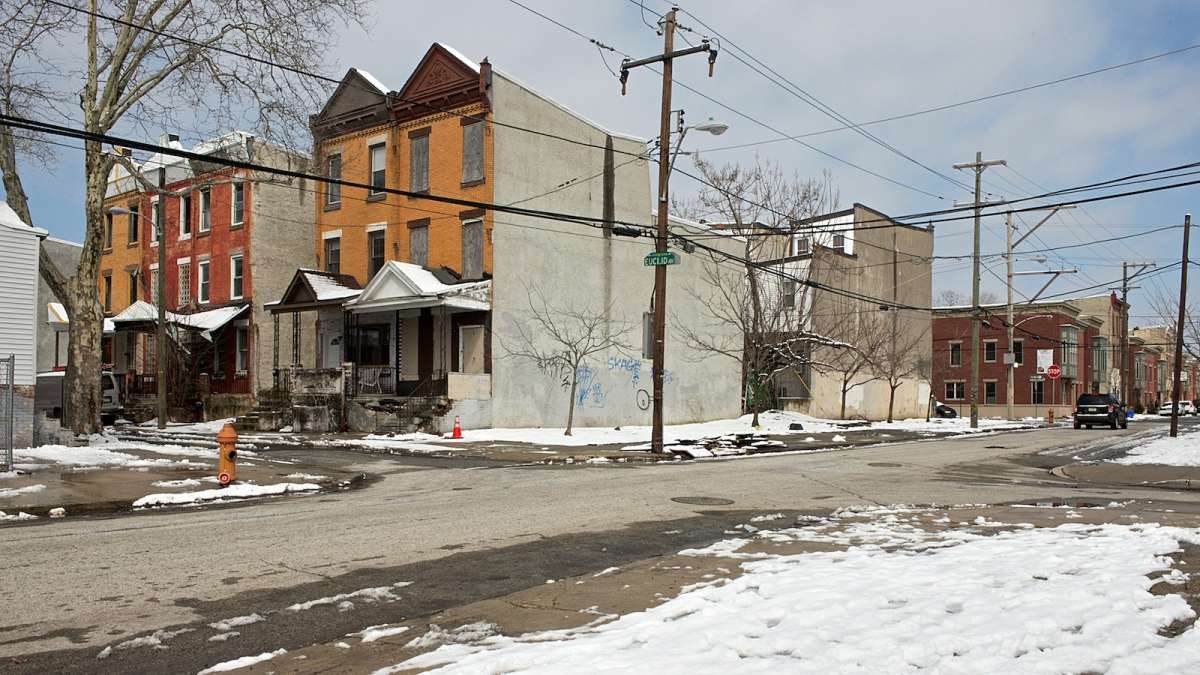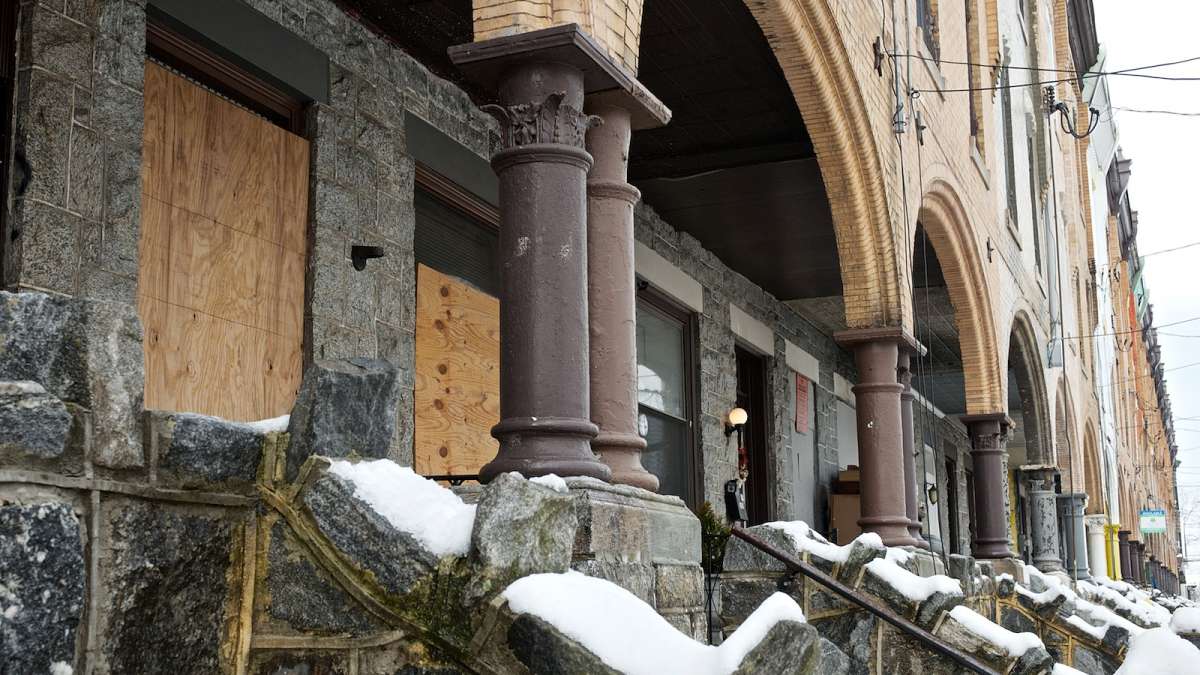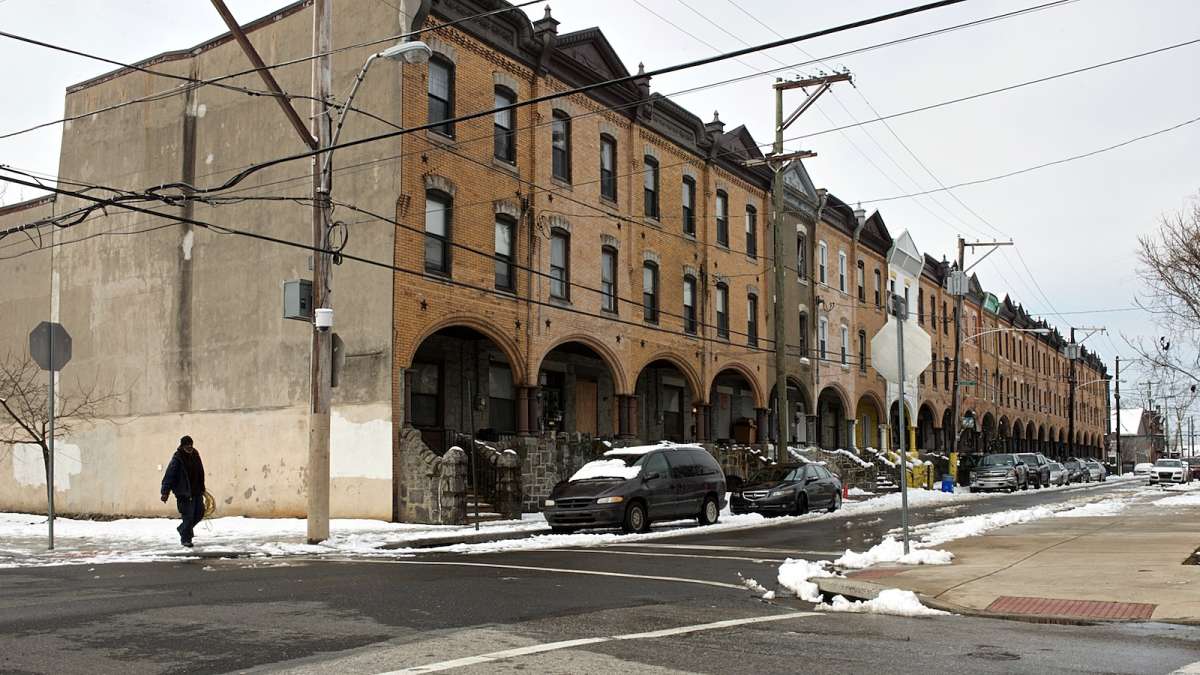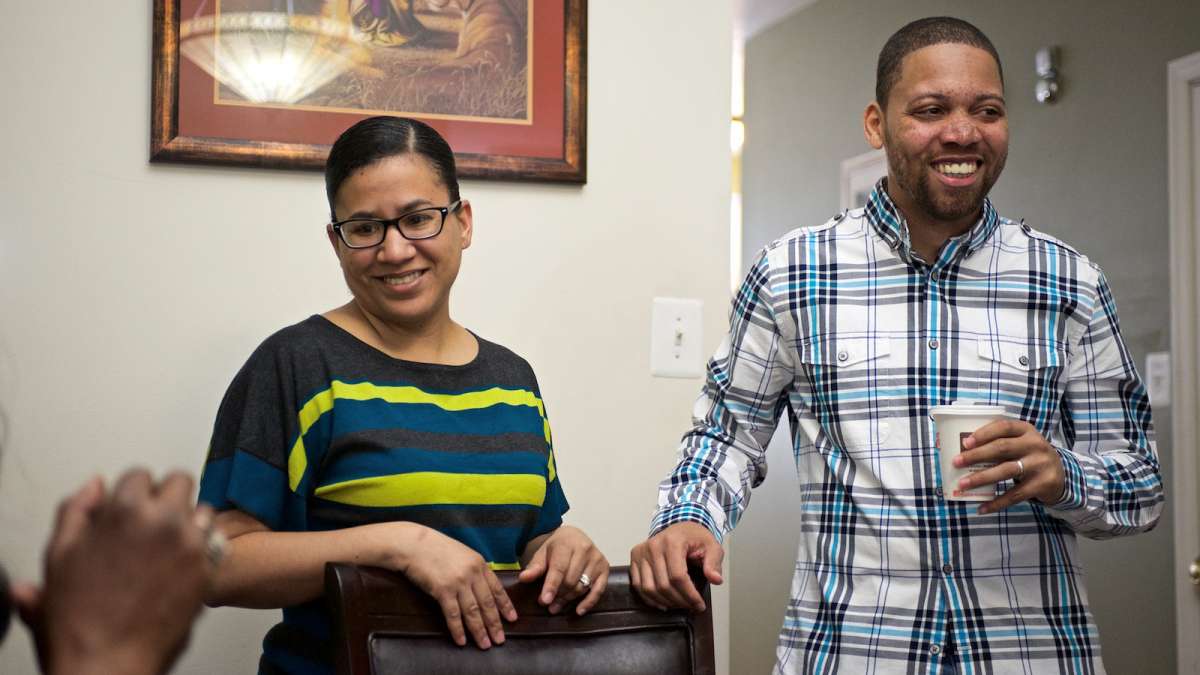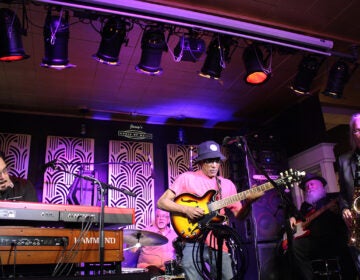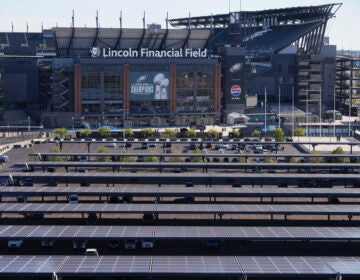15 years later, appraising $300 million effort to transform Philly neighborhoods
ListenIn 2004, Donna Bullock brought home a flier that changed her life.
She was 25 and about a month away from marrying her law-school sweetheart, Otis. The young couple was also looking for a house to call home.
“We didn’t have a nest egg or a substantial down payment,” said Donna.
The flier advertised an opportunity for first-time buyers. Specifically, on the 3100 block of West Berks Street in Strawberry Mansion, then a crumbling stretch north of Girard Avenue near the Schuylkill River.
At first, Otis had his doubts. He knew what the neighborhood was like. He wasn’t sure Donna did.
“You know what this means right? It’s rough around there,” said Otis.
No problem, Donna told him. She liked the idea of living in a neighborhood where she could make a difference.
Besides, how else could they afford so much house?
More than a decade later, the Bullocks — now a family of four — have grown deep roots on West Berks. The doubts are long gone.
“When I go to career day at the local school, the kids are not only able to say, ‘Oh, wow she’s a lawyer.’ They’re able to also say, ‘Yeah, she lives on my block. That’s Ms. Donna. I know her.’ I think those things in the long run help build this community beyond the bricks and mortar,” she said.
The property the Bullocks bought was fixed up, in part, thanks to funds from the Neighborhood Transformation Initiative, launched in 2001 by Mayor John Street. It was bankrolled by nearly $300 million in bonds.
Nearly 15 years later, the ambitious, anti-blight program is wrapping up for good. In the coming months, its entire budget — if all goes well — will be fully spent.
Which prompts a pretty big question: What was accomplished with all that cash?
Costs and effects
Thousands of residents like the Bullocks benefited from NTI. Still, getting a clear and complete picture of its overall impact isn’t easy.
Here are a few things that are known.
Nearly half of NTI’s budget was spent on demolitions, though the city only tore down half of the 14,000 buildings it planned to remove.
The rest went to housing and neighborhood preservation as well as gathering small lots into large parcels attractive to developers.
The Philadelphia Redevelopment Authority is only now working with various city departments and programs to pull together information for a detailed overview of NTI’s track record.
A public presentation is expected toward the end of the year. Brian Abernathy, executive director of the authority, said the data will show that NTI had a “tremendous impact” on the city.
“We have more affordable housing units, we have less blight, we have better economic development projects, we have investment in our commercial corridors all because of this program.”
Focusing on the future — and beyond Center City
Where his predecessor Ed Rendell focused on making Center City safe and inviting, John Street put his energy as mayor into improving the outlying neighborhoods. NTI was the biggest program to carry out that vision.
Street declined to comment for this story, but certainly laid out his vision for reporters when the program launched.
“It’s about a comprehensive way of investing strategically, resources in our neighborhood so that we have a bright future for our neighborhoods and our people who live in our neighborhoods,” Street told NBC10 in 2001.
When NTI began, blight had become a significant, citywide problem. It’s estimated Philadelphia had 57,000 vacant properties then.
Nearly 8,000 were considered imminently dangerous.
“I used to wake up in the morning to hear that houses had fallen down,” said Patricia Smith, NTI’s first director. “Thankfully, at that point in time, no one was hurt, but at least a couple properties at least two or three a week. That’s a frightening situation.”
These days, as Smith looks over a giant, grass lot in eastern North Philly where vacant properties once stood, she’s happy she’s part of the NTI story.
“It wasn’t going to fix every problem, but the idea was how do you begin to clear the path for investment and development in communities and making Philadelphia a great place to live, to work, to learn, to shop and to play,” said Smith.
The final $37 million for NTI must be spent by March or be returned to bondholders.
The planned restoration of the Divine Lorraine Hotel on North Broad Street is perhaps the most high-profile example of projects getting some of that money. NTI dollars are also being used to improve Bartram’s Garden in Southwest Philly and help the city’s department of Licenses and Inspections pay for demolitions.
Still, the program will always have its critics.
Critical assessments
John Kromer, who led the city’s Office of Housing and Community Development under Rendell and briefly worked for Street, said NTI would have accomplished more had Street spent more time planning ahead.
“If he had said, ‘My first year in office is going to be the year of planning, and by the end of that year every neighborhood is going to have a plan, and that’s all we’re going to do with respect to the neighborhood transformation initiative’ — I think people would have bought that,” Kromer said. “I’m not saying everything would have been perfect, but I think that could have been an approach that would have worked better than what actually happened.”
Kromer also said it was a bad idea to allocate multimillion-dollar chunks to City Council to spend.
“That was a big mistake and led to a lot of administrative problems, but also led to the existence of unspent funds that’s being faced right now. The administration’s job is really to lead, and, once some of that leadership is handed over to a legislative body, you’re starting to lose ground,” he said. “It’s very hard to gain it back.”
After Smith, Eva Gladstein ran NTI for the last few years of Street’s time in City Hall. She now leads the Mayor’s Office of Community Empowerment and Opportunity.
Gladstein said Philadelphians would think better of it if they could connect the dots between NTI and specific projects or programs.
“How you measure success was never as clearly articulated as it could be, and it was hard to share that with the public at large,” she said.
Philadelphia’s next mayor still inherits an estimated 40,000 vacant properties.
The difference is that there’s a lot more interest from private developers these days.
Neighborhoods like Fishtown, Northern Liberties, Pennsport, they no longer really need the city to help spur development.
What’s more, the city finally has a land bank, a centralized, permanent way, of selling off vacant, city-owned properties.
WHYY is your source for fact-based, in-depth journalism and information. As a nonprofit organization, we rely on financial support from readers like you. Please give today.



